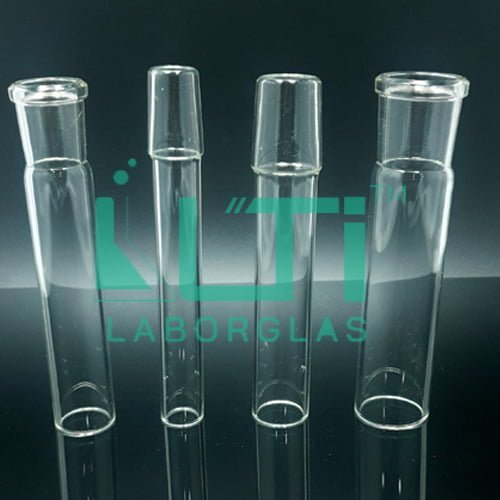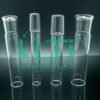As per ASTM standards E – 676
| Part No. | Female Joint | Part No. | Male Joint | Pack QTY |
| 1190-14F | 14/20 | 1190-14M | 14/20 | 10 |
| 1190-19F | 19/22 | 1190-19M | 19/22 | 10 |
| 1190-24F | 24/40 | 1190-24M | 24/40 | 10 |
| 1190-29F | 29/42 | 1190-29M | 29/42 | 10 |
Here are some potential uses for unground male and female interchangeable glass joints in a laboratory setting:
- Educational Demonstrations: Unground glass joints may be used in educational laboratories for teaching purposes. They allow students to assemble and disassemble glassware setups for various experiments and demonstrations.
- Quick Assembly and Disassembly: Unground joints are less precise than their ground counterparts, but they can still be used for setups where quick assembly and disassembly are more important than achieving an airtight or vacuum-tight seal.
- Prototyping: In research and development settings, unground glass joints may be used for prototyping and testing new equipment. They offer flexibility in assembling and modifying setups for experimental purposes.
- Non-critical Applications: For experiments where a high level of precision in the joint is not necessary, unground joints can be suitable. This might be the case in certain qualitative experiments or less sensitive applications.
- Temporary Setups: Unground glass joints can be used for temporary or short-term setups where the cost and time associated with obtaining precisely ground joints may not be justified.
- Teaching Laboratory Techniques: In teaching laboratories, unground glass joints can be used to introduce students to basic laboratory techniques, glassware handling, and the principles of experimental setup.







